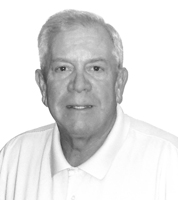 | Charlie Traffas has been involved in marketing, media, publishing and insurance for more than 40 years. In addition to being a fully-licensed life, health, property and casualty agent, he is also President and Owner of Chart Marketing, Inc. (CMI). CMI operates and markets several different products and services that help B2B and B2C businesses throughout the country create customers...profitably. You may contact Charlie by phone at (316) 721-9200, by e-mail at ctraffas@chartmarketing.com, or you may visit at www.chartmarketing.com. |
Health & Medicine
2006-03-01 08:45:00
Is a catheter necessary?
It is true that new technology now provides us with the ability to look at the coronary arteries and other structures surrounding the heart non-invasively. We no longer have to place a catheter in the heart arteries to visualize them. There will continue to be instances when this procedure is necessary but rapid cat scanning with a 64-slice CT scanner will enable us to make these pictures with virtually no risk to the patient. Approximately 700,000 people each year die of heart attacks in the US. Most of these deaths could be prevented if we had a simple method of making the diagnosis of a blocked artery earlier rather than later. Treadmill testing and other forms of non-invasive evaluation have often been inaccurate in detecting arterial narrowing. Our only method of looking at the coronary anatomy until now has been to do a heart catheter study. Heart catheterization has proven to be safe with a major complication risk of less than 1 in 1,000; and a minor complication risk such as bleeding or pain in the groin of about 1 in 100. Furthermore, patients are advised to limit their activity during subsequent 24 or 48 hours after the procedure and it is also relatively costly. The huge advantage of the 64-slice CT scanner is that no catheter insertion is necessary, there is no time loss from work, and the risk appears to be very minimal. This procedure takes less than 15 minutes and gives an accurate portrayal of the anatomy of the heart and surrounding structures. Other vessels in the body could be imaged in a similar way. The fact that there is no discomfort and no risk is extremely attractive to patients, families and physicians. Of all of the advancements in cardiology in the last 50 years, this appears to be as exciting to me as anything I have seen. This technology will enable us to screen patients at risk for heart attack, make diagnosis earlier, and treat most patients with stent-procedures, avoiding or delaying bypass surgery. The 64-slice CT scanner will be available at the Galichia Heart Hospital starting in March of 2006. We feel the opportunity to diagnose “silent heart disease“ has taken a giant step forward.


